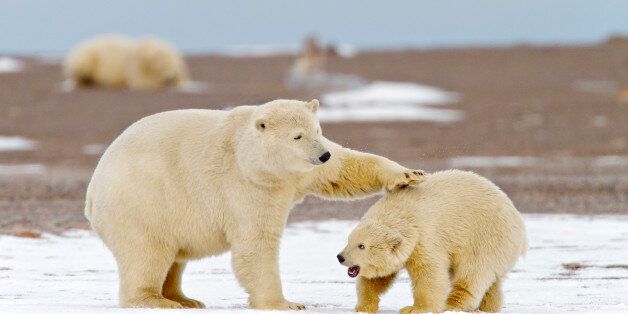
Fifty years ago today, my conservation hero and mentor Mardy Murie stood next to President Lyndon Johnson as he signed the Wilderness Act. Mardy had worked tirelessly to help pass the law, traveling across Alaska, testifying at hearings on Capitol Hill, and inviting lawmakers to come for tea and cookies on her ranch in Moose, Wyoming. Her efforts were fueled by a fierce belief that American society grows stronger when we protect wild refuges apart from civilization.
Mardy was not alone. Many groups rallied people in support of conservation from Alaska to Florida, with the Wilderness Society leading the way. And Congress passed the law with overwhelming support from Democrats and Republicans alike.
The vast majority of leaders recognized the importance of conserving landscapes "where the earth and its community of life are untrammeled by man, where man himself is a visitor who does not remain." These are the wild places that have fed our nation's character -- our grit, independence, and love of open horizons -- for centuries.
We need that spirit now more than ever. Only about 210 million acres of true wilderness remain in America. Roughly half of those have been protected under the Wilderness Act, but the rest remain vulnerable to the pressures of mining, logging, and especially energy development. The US has become the largest oil producer in the world, but an unchecked eagerness to explore and drill into new areas continues to expose our most precious landscapes to fossil fuel exploration.
It is time to protect wilderness-quality lands now -- before they become scarred by drill rigs and the wells, waste ponds, and pipelines associated with fracking.
Congress can do this by returning to its own tradition of conservation. In the past, Congress approved numerous wilderness bills during Republican and Democratic administrations alike. President Reagan, for instance, signed 43 into law. Yet in the last six years, Congress has delivered only two to President Obama.
Lawmakers must set aside partisan gridlock and protect untamed landscapes that belong to all the American people. They can begin by conserving a place that inspired so many champions of the Wilderness Act: the coastal plain of the Arctic National Wildlife Refuge.
Often called the American Serengeti because of its abundance of wildlife, this spectacular wilderness is a vital birthing ground for polar bears, grizzlies, Arctic wolves, and caribou. It is one of the largest sanctuaries left for Arctic animals. Yet the oil and gas industry and their allies are clamoring to drill in the coastal plain -- a push that would forever industrialize this pristine place.
Mardy knew that the true value of the coastal plain lay in keeping it wild for future generations. Mardy grew up in a log cabin in Fairbanks and spent decades traversing Alaska's wilderness. She wrote about her travels, describing how the Brooks Range had "a steady serene beauty that sings," and how a night trapped in an Alaskan snowstorm could leave one feeling "humble yet triumphant." Mardy became committed to preserving the rich coastal plain north of the Brooks Range, and in 1960 she helped persuade President Eisenhower to create the Arctic National Wildlife Refuge.
Yet this designation does not fully protect the coastal plain from energy development. Declaring it a wilderness area would safeguard it once and for all. U.S. Senators and Representatives have introduced bipartisan bills to designate the refuge's coastal plain as wilderness. Passing these laws would be a fitting tribute: we can honor our conservation past by preserving wilderness for generations to come. Click here to urge Congress to protect the coastal plain forever.
I had the privilege of traveling to the coastal plain last year. I remember the grizzly bears playing along the river, the wolves jogging through the grass, and the miles of wildflowers. I also remember stepping into the tiny visitors center in Arctic Village and seeing Mardy honored in its walls. "I hope the United States of America is not so rich that she can afford to let these wildernesses pass by. Or so poor, she cannot afford to keep them," she once told Congress. We are the nation that passed the Wilderness Act 50 years ago. Now we can be the nation that builds on that legacy.

